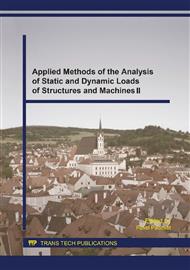p.344
p.348
p.352
p.359
p.367
p.371
p.375
p.379
p.383
Measurement of the Temperature and Pressure Characteristics of the Car Seats - Relationship between Humans
Abstract:
Research of the correlation of the biomechanical characteristic of a sitting human and car seat is based on measurements of several basic parameters, such as value of the area contact pressure, map of contact temperature, contact humidity, etc. So obtained map of surface each parameter which we can compare at a same time and so we can identify correlations between these parameters and biomechanical properties of human, e.g. human anatomy, the body forms, age, sex physique etc. Based on these analyzes is possible to optimize the levels of this parameters for obtaining the ideal seating comfort. The correlation between fatigue for the driver and sitting comfort is described in many publications dealing with this theme. However, a repeatability real experiment in a car is questionable [1]. It is therefore preferable to perform these measurements in the laboratory and simulate the same conditions as in moving car at a constant ambient temperature and humidity, with the same test persons. The most suitable is the use in the measurement of different types of car seats and various human.
Info:
Periodical:
Pages:
375-378
Citation:
Online since:
February 2016
Authors:
Keywords:
Price:
Сopyright:
© 2016 Trans Tech Publications Ltd. All Rights Reserved
Share:
Citation:


